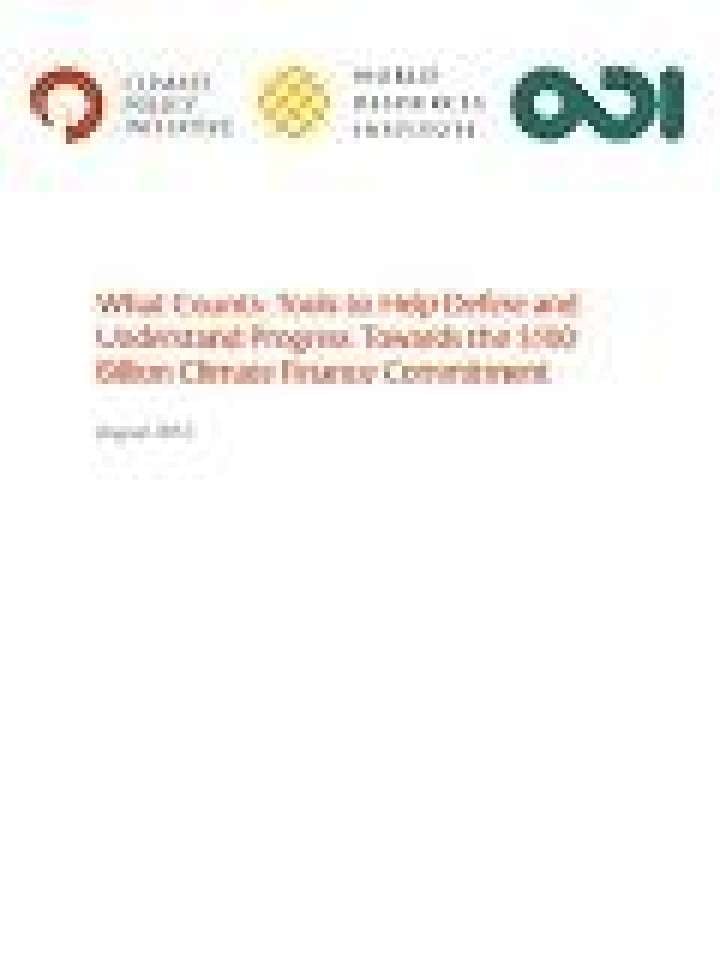What counts: tools to help define and understand progress towards the $100 billion climate finance commitment
This paper provides a series of simple tools to help parties to the UNFCCC consider what should count towards the target of $100 billion per year of climate finance by 2020. It encourages stakeholders to discuss the principles behind their views before focusing on the numbers to support deeper reflection on underlying assumptions and preferences.
The document distills the debate into five key variables that have emerged as relevant to what parties consider to "count" as climate finance: a) Motivation - the extent to which a financial flow was explicitly designed to reduce greenhouse gas emissions or support climate adaptation; b) Concessionality / source – the legitimacy of public versus private sources of climate finance, and the degree of "softness" of the finance reflecting the benefit to the recipient compared to a loan at market rate; c) Causality – the extent to which a contributor’s intervention, whether public finance or policy, can be said to have mobilised further investment in climate-relevant activities; d) Geographic origin; e) Recipient.
This paper builds on existing work by Climate Policy Initiative (CPI), Overseas Development Institute (ODI), World Resources Institute (WRI), and others including the UNFCCC’s Standing Committee on Finance on mapping and tracking the landscape of climate finance.
Explore further
